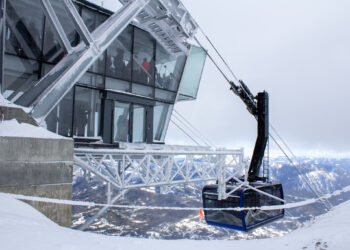
By Todd Wilkinson EBS Environmental Columnist
A Western congressman, who sits as ranking minority member on the House Natural Resources Committee, is calling into question the push to remove Greater Yellowstone’s grizzly bear population from federal protection under the Endangered Species Act.
U.S. Rep. Raul Grijalva, a Democrat from Arizona, sent a letter on Sept. 27 to Dan Ashe, national director of the U.S. Fish and Wildlife Service, saying the process of delisting grizzlies should be, at least, temporarily halted until federal and state wildlife officials satisfactorily answer lingering questions that, to date, have been ignored.
Grijalva is asking not only why concerns expressed by the Fish and Wildlife Service’s sister agency, the National Park Service, appear to be going unheeded, but he also wants the states of Wyoming, Montana and Idaho to clearly spell out how they can guarantee a stable, sustainable population of grizzlies will be maintained.
Grijalva’s letter cites a recent response to questions—heretofore unavailable to the press—written by Park Service Regional Director Sue Masica Sept. 14, 2016, with assistance from Yellowstone Superintendent Dan Wenk and his staff.
They expressed serious concerns about the fate of transboundary grizzlies that routinely move to and fro across artificial national park borders.
Grijalva calls out the Fish and Wildlife Service for appearing to renege on a promise that the public will be able to comment on a revised final draft of a document called the Conservation Strategy.
Wenk has expressed frustration over a span of several months at how “allowable mortality” is being calculated by the Fish and Wildlife Service in its collaboration with states and other federal agencies. The Park Service has been left out of those discussions.
In 2015, the Greater Yellowstone grizzly population had a record year for fatalities caused by humans, many of them involving conflicts with big game hunters involving clashes over carcasses or claims of self-defense.
“Human-caused mortality within the primary conservation area likely will increase after the delisting of grizzly bears if and when states decide to implement hunting on national forest lands, private lands, and elsewhere outside National Park Service-managed lands,” the Park Service wrote to Grijalva and the Natural Resources Committee. “Without commitments to conservative restrictions on hunting and focusing hunting away from park boundaries, the role of the primary conservation area in providing secure habitat and reducing human-caused mortalities to grizzly bears likely will be substantially diminished.”
Wildly varying estimates contend that somewhere between 600 and 1,000 grizzlies inhabit Greater Yellowstone, up from as few as 136 that remained in the ecosystem in 1975 when the bruins were hastily listed under the Endangered Species Act.
Masica also highlighted an issue of enormous controversy that has attracted widespread criticism from independent scientists and conservationists, that of states’ pushing for annual allowable mortality of 9 to 10 percent for “independent females” without cubs and 20 to 22 percent for male bears.
Transboundary grizzlies like world-famous bear 399, who lives along the intersection of Grand Teton National Park and the Bridger-Teton National Forest, could be placed in peril by a proposal to remove grizzlies from federal protection. Both the Park Service and Grijalva say the process of delisting needs to stop until the Fish and Wildlife Service addresses questions to which the American public is owed answers.
In its letter to the House, the Park Service notes, “Survival rates of grizzly bears are high without human-caused deaths, while reproductive rates are quite low. Any harvest of bears above conservative harvest levels could intentionally or inadvertently contribute to reduced population growth due to increased adult mortality and disruption of social organization, which could result in fewer young animals added to the population in the future.”
On a related matter, Wenk suggests that hunting grizzlies beyond the northern boundary of Yellowstone could inhibit biological connectivity occurring between Greater Yellowstone’s population and bears in the Northern Continental Divide Ecosystem in and around Glacier National Park.
Of the process for delisting, Grijalva said, “This proposal has multiple serious problems, as Park Service leaders have made clear, and until the Fish and Wildlife Service addresses those problems I cannot support the delisting. Fish and Wildlife needs to put law and science ahead of short-term local wishes to reduce the bear population. In the meantime, grizzlies must continue to receive endangered species protections.”
Todd Wilkinson has been a journalist for 30 years. He is author the recent award-winning book “Grizzlies of Pilgrim Creek: An Intimate Portrait of 399, the Most Famous Bear of Greater Yellowstone,” featuring 150 astounding images by renowned American nature photographer Thomas Mangelsen. EBS publishes Wilkinson’s New West column every week online and twice a month in the printer version of the paper, under a partnership arrangement with the Wyoming online journal thebullseye.media.











